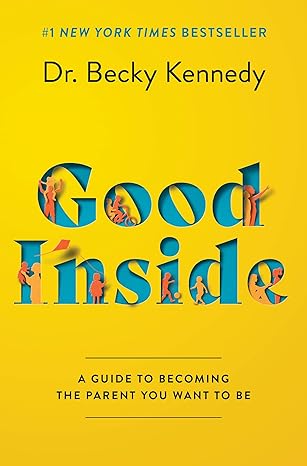Why We Need Emotion Control
Ever been stuck in a loop of anxiety, anger, or sadness? The problems keep coming up when we fight them, suppress them, or try to pretend they don’t exist, if we go the other way around – ignoring them doesn’t work as well.
The truth is, emotions like anxiety, anger, and sadness aren’t the enemy, they’re signals from your body trying to tell you something important. The better way is, to acknowledge these tough feelings, understand them, and give yourself the permission to feel without being consumed by them.
That’s where the AVP model steps in.
Who Came Up with This Model?
The AVP model stands for Acknowledge, Validate, Permit.
It was developed by Dr. Becky Kennedy, a renowned clinical psychologist and parenting expert. Known as “Dr. Becky” by her fans, she’s the author of the bestselling book Good Inside, which explores practical tools for emotional regulation and parenting.

Dr. Becky’s approach isn’t just about parenting—it’s about fostering emotional intelligence in every aspect of life. Her insights make the AVP model a go-to strategy for anyone looking to navigate the messy world of feelings with grace.
What is the AVP Model, and How Do You Use It?
Now let’s break it down and see what’s inside:
Acknowledge
Start by labelling your feelings.
This isn’t just a “touchy-feely” exercise; naming what you’re experiencing helps you face it head-on. Simply recognizing the emotion can take away some of its sting.
For example:
- This moment feels hard.
- I’m noticing anxiety right now.
- My chest feels tight, and my heart is racing
Validate
Your feelings are valid—every single one of them. They’re not random or irrational; they’re your body’s response to your experiences.
Tell yourself why your emotions make sense:
- I’m exhausted from juggling work and parenting. It’s okay to feel overwhelmed.
- My friend cancelled on me after a rough day; of course, I feel disappointed.
This step helps you feel at home in your body rather than fighting against it.
Permit
Here’s the game-changer: give yourself permission to feel. Tell yourself it’s okay to feel exactly as you do.
Remember, permitting doesn’t mean losing control. You can permit anger while choosing to use a calm voice or permit frustration while maintaining kindness.
Examples:
- I have full permission to feel frustrated right now.
- It’s okay to feel like life is hard today.
Wrapping Up
The next time you’re overwhelmed, remember: Acknowledge, Validate, Permit. It’s a simple practice, but it can make a world of difference in how you approach your emotions.
So, let’s stop battling our feelings and start embracing them. After all, being human is messy, but it’s also beautiful.
Give the AVP model a try—it might just change how you relate to yourself.


